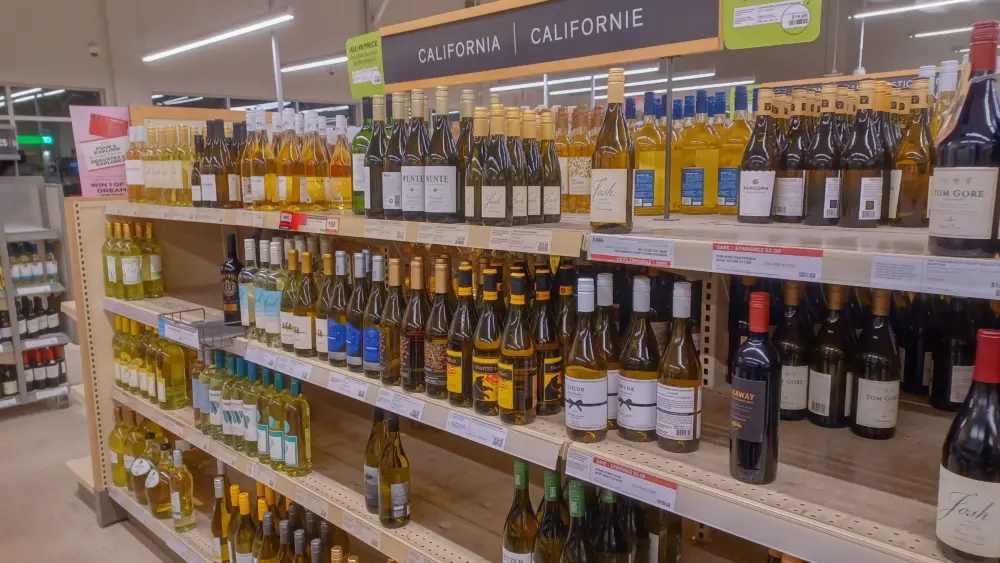
The California wine industry, a $40 billion statewide business behemoth, is gaining increased scrutiny in terms of what it says and what it does. There are increasing calls to look under the hood and see exactly what’s going on, who benefits from its products and services, and if there are ways to improve transparency and accountability of a business that historically has been mysterious and secretive.
And the Napa Valley — arguably the most recognizable wine region in America — has become the focal point for many.
In July, the San Francisco Chronicle began publishing a compendium of stories called “Napa in Flux.”
“Decades from now, I believe we’ll look back at this period in Napa’s history—as it grapples with wildfires, outsized wealth, changing consumer tastes, environmental debates and more—as the time when everything changed,” wrote Esther Mobley, the paper’s senior wine critic. She went on to address any naysayers with the caveat that, “We love Napa and its wines, which is all the more reason they deserve to be held to account.”
And what are we going to find when we use the Napa Valley as a microcosm for the broader industry? First off, I bet we find plenty to crow about, such as the era of ultra-priced, 100-point industry-changing Cabernet Sauvignons that have influenced how wine is made, purchased and valued around the globe. We’ll find that farmers such as Andy Beckstoffer took the branding of vineyards to a new level, finding ways to charge astronomical prices for his grapes grown on such vineyards as To Kalon and Dr. Crane. We’ll find the advent of wine auctions, wine tourism and the creation of wine-marketing “vintner” organizations that have now become ubiquitous around the planet, each touting and promoting the special characteristics of its particular regions. We’ll find, too, the thousands of ancillary jobs created by the need to service millions of yearly visitors. We’ll find that in 1968 the Napa County Agricultural Preserve was formed to stop the Napa Valley from being paved over into a suburban bedroom community for the Bay Area.
But we’ll also find the soot of an industry that was largely created by white, mostly privileged men who acted as if they were a bunch of Wild West characters hell bent on creating a brand-new (at least for America) luxury industry while also becoming rich and famous along the way. What that means is that we’ll likely find plenty of exclusionary practices, shady business dealings, the fallout from hyper-competition and a lot of churn-and-burn real estate deals. We’ll find false claims ranging from the health benefits of drinking wine to the “availability” of nonexistent water. We’ll find egregious environmental activities that have put our waterways, the health of workers and entire ecosystems at risk. And like the most popular soap operas, we’ll also find outright lies, petty deceits and an abundance of hubris, arrogance, bitter divorces, and businesses built on the backs of the used and abused.
You’ll find all of this in the Napa Valley and beyond. I can guarantee it. I’ve seen it, written about it and pondered its implications.
Let me give you a couple of small examples. Water is a big deal when it comes to owning a vineyard. The quantity and consistency of your water source is at the very root of a vineyard’s success. Even if you plan on “dry farming,” having access to water is critical when it comes to planting the young vines and then dealing with excessive drought or extended high-heat events.
A few years back there was a rumor that every new water well would need to be monitored and that its depth would be limited. Someone I know (and she wasn’t the only one) decided that to deal with the rumored threat of being “regulated” she planned to drill four new wells on her property. “I’ll just drill them deeper than my neighbors,” she said. “And if they [my neighbors] go dry, I’ll sell them water.”
Was she kidding? Nope. And what she did was completely legal, if extremely unneighborly.
Another example. Someone else heard that cutting down oak trees would soon hinder vineyard development. The result? He cut down every oak on his 40-acre parcel, “Just in case.”
The Napa Valley has plenty of good things to highlight, but like nearly any billion-dollar industry, dig deep enough and who knows what might be uncovered.
Author
-

Tim Carl lives, writes and teaches in Calistoga. He grew up in St. Helena and traces his Calistoga grape-growing roots back five generations. You can reach him at tcarl@northbaybiz.com.
View all posts



